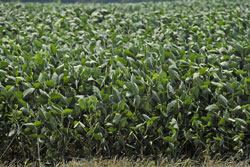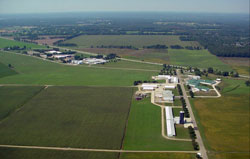 Those DDG’s must have some value eh?
Those DDG’s must have some value eh?
CHS , a leading grains, food and energy company, and Commodity Specialists Company (CSC) have entered into a definitive purchase agreement for CHS to acquire the distillers dried grain (DDG) marketing business of CSC. The transaction has been approved by the boards of both companies and is scheduled to become effective in the coming week. Steve Markham and Sean Broderick, current managers of this operation for CSC, will continue to direct the activity of this unit as employees of CHS.
“For the last 20 years, CSC has successfully focused on being the premier independent DDG marketer in the ethanol industry,” said Phil Lindau, CSC co-president. “As volume in the ethanol industry continues to expand rapidly over the next five years, we determined our DDG business would benefit from the resources of a larger entity.”
“This DDG business, in addition to providing exceptional sourcing for current CSC customers, also provides an excellent supply complement to CHS grain and by-product customers, both domestically and internationally,” said Rick Browne, senior vice president, CHS Grain Marketing. “Putting together CSC’s marketing and industry expertise with our global access and established distribution capabilities will enhance the already high level of service and market execution to both ethanol plant suppliers and DDG customers.”

 It’s getting a little dry here in parts of the midwest. This is corn on the right side of me as I was out and about this morning.
It’s getting a little dry here in parts of the midwest. This is corn on the right side of me as I was out and about this morning.  It’s not just corn feeling the heat and dry though. Soybeans are looking a little stressed out too.
It’s not just corn feeling the heat and dry though. Soybeans are looking a little stressed out too.  I just got the latest edition of the Pork Industry Report from the
I just got the latest edition of the Pork Industry Report from the  The traveling agriblogger is going to take most of the next day and a half off before hitting the road again so you may not see much new from me until the end of the weekend. But then it’s off to new places.
The traveling agriblogger is going to take most of the next day and a half off before hitting the road again so you may not see much new from me until the end of the weekend. But then it’s off to new places. After that it’s off to Minneapolis, MN and the
After that it’s off to Minneapolis, MN and the  Thanks to Kyle Maw for reminding me about the
Thanks to Kyle Maw for reminding me about the 
 Four staff members at
Four staff members at  Osborn & Barr Communications (O&B), one of North America’s leading full service communications agencies, has promoted key staff members to further strengthen its ability to supply clients with innovative and strategic advertising, public relations, digital marketing and media services.
Osborn & Barr Communications (O&B), one of North America’s leading full service communications agencies, has promoted key staff members to further strengthen its ability to supply clients with innovative and strategic advertising, public relations, digital marketing and media services. As a member of O&B’s OBLT committee, he will assist in setting the agency’s strategic direction. Hawkins also serves as the communication chairman for the Gateway Chapter of the National Agri-Marketing Association.
As a member of O&B’s OBLT committee, he will assist in setting the agency’s strategic direction. Hawkins also serves as the communication chairman for the Gateway Chapter of the National Agri-Marketing Association.
 Previously, Sarah served as an account supervisor on the public relations team.
Previously, Sarah served as an account supervisor on the public relations team.
 He’s John Walter and actually he was strumming a guitar at the Ag Media Summit. John’s the editor of
He’s John Walter and actually he was strumming a guitar at the Ag Media Summit. John’s the editor of  After blogging an event like the Ag Media Summit there’s always the follow up work. For me this includes archiving my photos. I use
After blogging an event like the Ag Media Summit there’s always the follow up work. For me this includes archiving my photos. I use